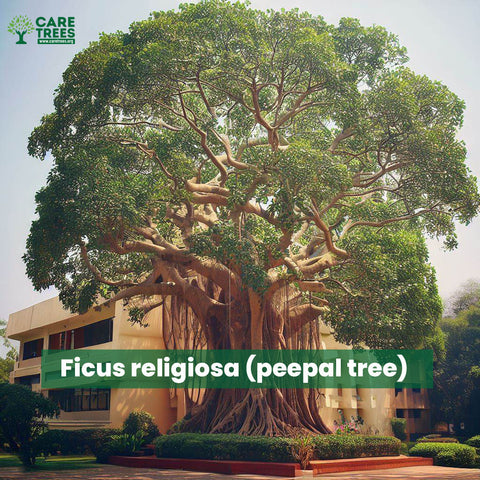India is a vast and diverse country with a wide range of climates and landscapes. This means that there are many different trees that can be planted near houses in India. Some of the most popular trees include:
Ficus religiosa (peepal tree)

- This tree is considered sacred in Hinduism and Buddhism. It is a large tree that can grow up to 100 feet tall. The leaves of the peepal tree are heart-shaped and the flowers are small and white. The peepal tree is a good choice for planting near houses because it provides shade and can help to reduce noise pollution.
Azadirachta indica (neem tree):

- This tree is native to India and is known for its medicinal properties. It is a large tree that can grow up to 80 feet tall. The leaves of the neem tree are dark green and the flowers are small and yellow. The neem tree is a good choice for planting near houses because it can help to repel mosquitoes and other insects.
Mangifera indica (mango tree):

- This tree is native to India and is known for its delicious fruit. It is a medium-sized tree that can grow up to 50 feet tall. The leaves of the mango tree are dark green and the flowers are small and white. The mango tree is a good choice for planting near houses because it provides shade and can help to improve the air quality.
Cocos nucifera (coconut tree):

- This tree is native to India and is known for its versatile fruit. It is a large tree that can grow up to 100 feet tall. The leaves of the coconut tree are large and green and the flowers are small and white. The coconut tree is a good choice for planting near houses because it provides shade and can help to improve the air quality.
Bassia latifolia (Indian laurel tree):

- This tree is native to India and is known for its beautiful flowers. It is a medium-sized tree that can grow up to 50 feet tall. The leaves of the Indian laurel tree are dark green and the flowers are large and white. The Indian laurel tree is a good choice for planting near houses because it provides shade and can help to improve the air quality.
When choosing trees to plant near your house, it is important to consider the size of the tree, the amount of sunlight the area receives, and the type of soil. It is also important to choose trees that are native to your area, as these trees will be better adapted to the climate and pests.
Here are some additional tips for planting trees near your house:
- Choose trees that are the right size for your space.
- Plant trees in the spring or fall when the weather is mild.
- Water trees regularly, especially during the first year after planting.
- Mulch around trees to help retain moisture and suppress weeds.
- Fertilize trees according to the instructions on the fertilizer label.
- Prune trees as needed to maintain their shape and size.
By following these tips, you can help your trees thrive and provide you with years of enjoyment.
Benefits of Planting Trees Near Your House
There are many benefits to planting trees near your house. Some of the most common benefits include:
- Shade: Trees provide shade, which can help to cool your house and reduce your energy bills.
- O2 Production: Trees produce oxygen, which is essential for human life.
- Pollution Reduction: Trees help to reduce air pollution by absorbing pollutants from the air.
- Noise Reduction: Trees help to reduce noise pollution by absorbing sound waves.
- Erosion Control: Trees help to control erosion by holding soil in place.
- Wildlife Habitat: Trees provide a habitat for wildlife, such as birds, squirrels, and bees.
- Property Value: Trees can increase the value of your property.
If you are considering planting trees near your house, I encourage you to do so. Trees are a valuable asset that can provide you with many benefits for years to come.

